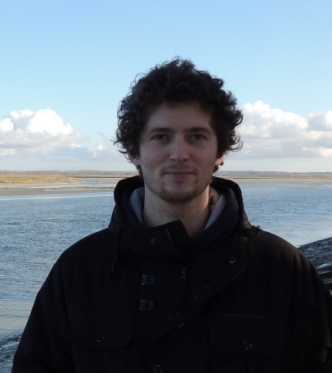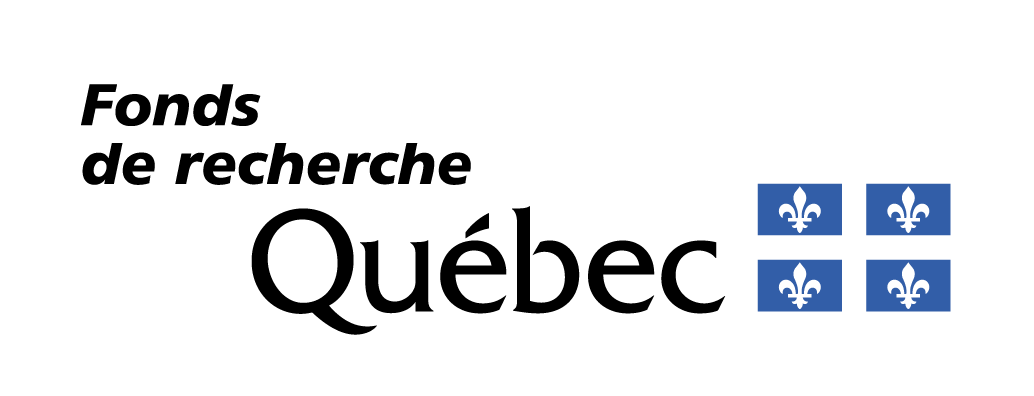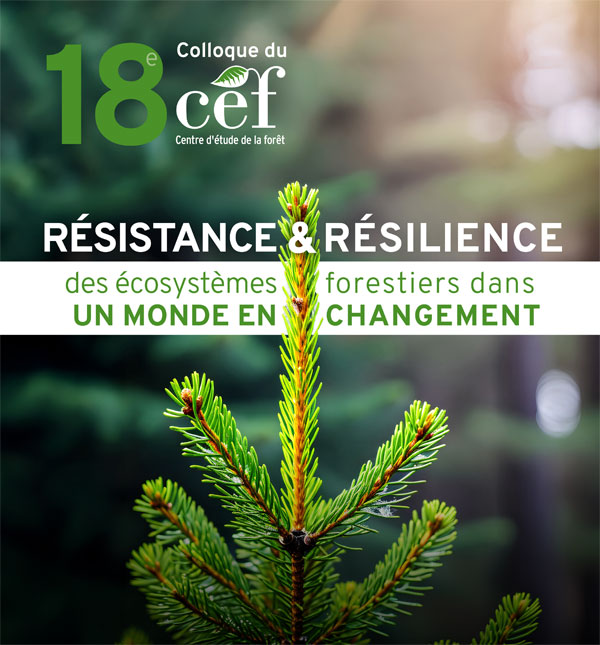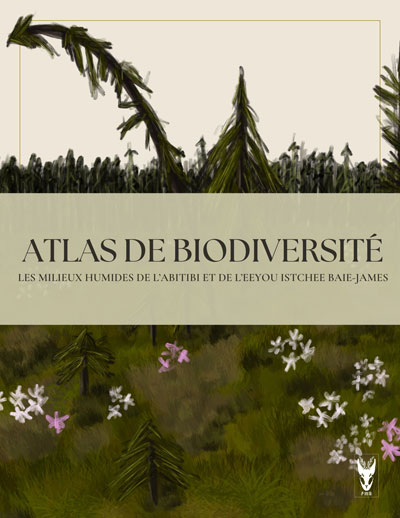
Julien Ponchart
Ph.D. in Forest Sciences
Explorative metabarcoding of Abies balsamea L. Mill. endomycobiota ![]()
Université Laval
Director: Louis Bernier
Co-director: Jean A. Bérubé
Courriel:
Twitter: @julponchart ![]()
Education
- Ph.D. in Forest Sciences, 2019 (Université Laval, Quebec-city - Canada)
- Master in Plant Biology, 2009 (Université de Picardie, Amiens - France)
- Licence (B.A. Sc) in Biology, 2007 (Université de Picardie, Amiens - France)
Project summary
As for the studies of other members of the plant microbiota, fungal endophytology has vastly benefited from the development of High Throughput Sequencing techniques in the late 2000s. This technological progress has notably allowed for the popularization of metabarcoding, i.e. a DNA-based approach to identify biodiversity components from environmental samples and study the community composition and distribution. The massive production of data, and the standardization in the sample preparations associated with such methods, have deeply modified the perception of the extent of the fungal biodiversity. Yet fungal endophytology precepts remain largely inherited from culture-dependent methods which have been shown to yield a more fractioned portion of the biodiversity than the molecular-based approach, as many fungi are not amenable to standard culturing. HTS techniques are not without drawbacks either as they tend to inflate the biodiversity estimates even with state of the art analysis. The main goals of this thesis were first to develop a more rigorous approach to analyse data obtained from 454 pyrosequencing, one of the original HTS techniques, in order to estimate conservatively the biodiversity; and then to develop a better understanding of the structure of forest trees endomycobiota and challenge earlier conclusions based on culture-dependent methods.
Inflation of the biodiversity is mostly due to remaining undetected erroneous sequences partially forming the large number of singletons and doubletons generally observed with HTS based studies. Three sources of error are significant: PCR chimeras, PCR single base substitutions, and sequencing error. Here I hypothesized that the selection of a sub-region of the fungal barcode displaying particular characteristics might, if not formally assess erroneous sequences as such, at least limit their impact on the estimation of the diversity. I thus considered a fragment composed of the partial ribosomal small sub-unit immediately following the ITS1F primer in addition of the ITS1 sub-locus (pSSU-ITS1). I showed that basing the analysis on the pSSU-ITS1 fragment enhances the sensitivity of chimera detection. As PCR single base substitutions and sequencing errors remain rare events, spurious sequences are rare too and somewhat similar to true abundant sequences. I hypothesized that the presence of the pSSU, whose variability is lower than that of the ITS1 sub-locus, might buffer these errors. Putative rare spurious sequences were grouped with the true abundant sequences they deviated from, thus reducing the proportion of singletons and doubletons. I then developed an approach to readily extract this pSSU-ITS1 fragment from fungal ITS amplicons.
I observed from the endomycobiota of a single balsam fir that I produced to test my data treatment in the first chapter that considering the pSSU-ITS1 fragment did not alter the conclusions on the structure of the fungal endophytic community from ITS1 analysis. While it has to be considered with appropriate reservations due to the limited sampling, I also estimated, for the first time to the best of my knowledge, the extent of the fungal endophyte biodiversity harboured by a single tree at a precise time with an extrapolation of 2 536 ± 73 mOTUs. In the second chapter on the endomycobiota present in the different tissue types of balsam fir branches, I confirm that some tissue specificity is exhibited by fungal endophytes as my results suggest that the aerial endomycobiota of balsam fir trees might be fractioned in distinct communities depending on the tissue types. Finally, in the third chapter, I reveal that the mechanisms of colonization of the host plant by fungal endophytes might be more complex and dynamic that the suggested passive accumulation hinted by culture-dependent methods. The last four cohorts of needles from balsam fir sampled displayed relatively similar diversities, but harboured distinct communities.
Research interests
- Metabarcoding Studies
- Plant/Microbes interactions
- Conservation/Rewilding notably of Plant Communities
Research & Related Experiences
- 2012: Endophytic Fungi Survey, 2 months internship supervised by Dr Elizabeth Arnold
 at the University of Arizona (Tucson - USA). The mentorships of both Dr Arnold and Dr Jana U'Ren
at the University of Arizona (Tucson - USA). The mentorships of both Dr Arnold and Dr Jana U'Ren  allowed me to develop skills in molecular ecology and improve the data treatment from high-throughput sequencing.
allowed me to develop skills in molecular ecology and improve the data treatment from high-throughput sequencing.
- 2010-2015: Research Assistant at the Laurentian Forestry Centre (Canadian Forest Services - Quebec). Sampling to production of the data for my Ph.D. Routine assistance to the technician, basically involved in every project of the Bérubé's lab (internal and collaborations) based on metabarcoding.
- 2009: "Potatoes/Pectobacterium atrosepticum Interactions", 8 months internship supervised by Dr Ian Toth
 at the SCRI (Dundee - Scotland), nowadays part of the James Hutton Institute
at the SCRI (Dundee - Scotland), nowadays part of the James Hutton Institute  . The mentorship of Dr Ian Toth and the daily tutoring of Dr Sonia Humphries & Dr Emma Campbell allowed me to develop good laboratory habits while studying the Pectobacterium atrosepticum/Potato pathosystem, and notably in determining for two regulators the extent of their roles in pathogenesis (real time RT-PCR). This internship also allowed me to study a more classical approach of phytopathology (hypersensitive response test, follow-up of symptom propagation (both blackleg on the stem and soft rot in tuber)).
. The mentorship of Dr Ian Toth and the daily tutoring of Dr Sonia Humphries & Dr Emma Campbell allowed me to develop good laboratory habits while studying the Pectobacterium atrosepticum/Potato pathosystem, and notably in determining for two regulators the extent of their roles in pathogenesis (real time RT-PCR). This internship also allowed me to study a more classical approach of phytopathology (hypersensitive response test, follow-up of symptom propagation (both blackleg on the stem and soft rot in tuber)).
- 2008: "Biodiversity of foliar endophytic fungi of Acer saccharum", 3 months in Dr Jean A. Bérubé's lab at the Laurentian Forest Centre (Quebec - Canada). First contact with fungal barcoding.
- 2007: "Plant material study (varieties and rootstocks) for cherry-tree", 2 months internship at La Morinière's orchard (Saint Épain -France), part of the CTIFL
 . Focus on adaptation to the Val-de-Loire pedoclimatic conditions.
. Focus on adaptation to the Val-de-Loire pedoclimatic conditions.
Publications
Ponchart J.P. , Bernier L., Bérubé J.A. (2019a) SSU to the rescue: conserving the original partial SSU fragment ahead of the ITS1 sub-locus enhances the detection of putative chimeras and limits the formation of possibly spurious taxa in fungal metabarcoding. (Submitted to PeerJ)
Ponchart J.P. , Bernier L., Bérubé J.A. (2019b) Diversity, community composition and structure of the endomycobiota of balsam fir trees (Abies balsamea L. Mill.) as a function of tissue type. (Ready to be submitted to PeerJ)
Ponchart J.P. , Bernier L., Bérubé J.A. (2019c) Last four cohorts of Abies balsamea needles display relatively similar diversities but different endomycobiotas. (Ready to be submitted to PeerJ)
Presentations & Conferences
Oral presentations
- Ponchart J.P. , Bérubé J.A., Bernier L.
Biodiversité de l'endomycobiome du sapin baumier (Biodiversity of Balsam fir's Endomycobiome)
Annual Meeting of the Quebec Society for the Protection of Plants (QSPP)
Beaupré, Canada. June 17th – 18th, 2015. - Ponchart J.P. , Piché Y, Bérubé J.A.
454 pyrosequencing of a single Abies balsamea host tree reveals endophytic fungi are highly tissue specific.
79th Annual Meeting of the Mycological Society of America (MSA)
Fairbanks, USA. August 2nd – 5th, 2011.
Poster presentations
- Ponchart J.P. , Bérubé J.A., Bernier L.
Defining the baseline of the diversity of the balsam fir endomycobiome
The Ecology and Evolution of Emerging Plant Pests and Pathogens - British Ecological Society Symposium (BES)
Penryn, Great Britain. July 13th – 14th 2015. - Ponchart J.P. , Bérubé J.A., Bernier L.
The fungal tinsels within the Christmas tree.
9th Annual Conference of the CEF
Rimouski, Canada. April 30th - May 1st 2015. - Ponchart J.P. , Piché Y, Bérubé J.A.
The mycelium forest hidden within the tree.
81st Annual Meeting of the French-Canadian Association for the Advancement of Science (ACFAS)
Quebec-city, Canada. May 6th – 10th 2013. - Ponchart J.P. , Piché Y, Bérubé J.A.
Picea mariana fungal endophyte biodiversity obtained by Petri plating, cloning and pyrosequencing.
International Mycological Congress (IMC9)
Edinburgh, Scotland. August 1st – 6th, 2010
Collaborations
Anthropogenic activities mediate pathogen movement and alien invasions into new and natural environments
contributing to the formation of new hybrid species
XXV IUFRO World Congress
Curitiba, Brazil. September 29th – October 5th, 2019
Dale A., Feau N., Ponchart J.P., Bilodeau G.J., Bérubé J.A., Hamelin R.C.
Urban activities have an influence on Phytophthora species diversity in BC, Canada.
Sudden Oak Death Sixth Science Symposium
San Francisco, USA. June 21st - 23th, 2016
Cloutier V., Piché Y., Fortin J.A., Bérubé J.A., Ponchart J.P., Desrochers A.
Micromammal consumption of hypogeous fungi in Eastern Canadian boreal forest.
8th International Conference on Mycorrhiza
Flagstaff, USA. August 3rd – 7th 2015










